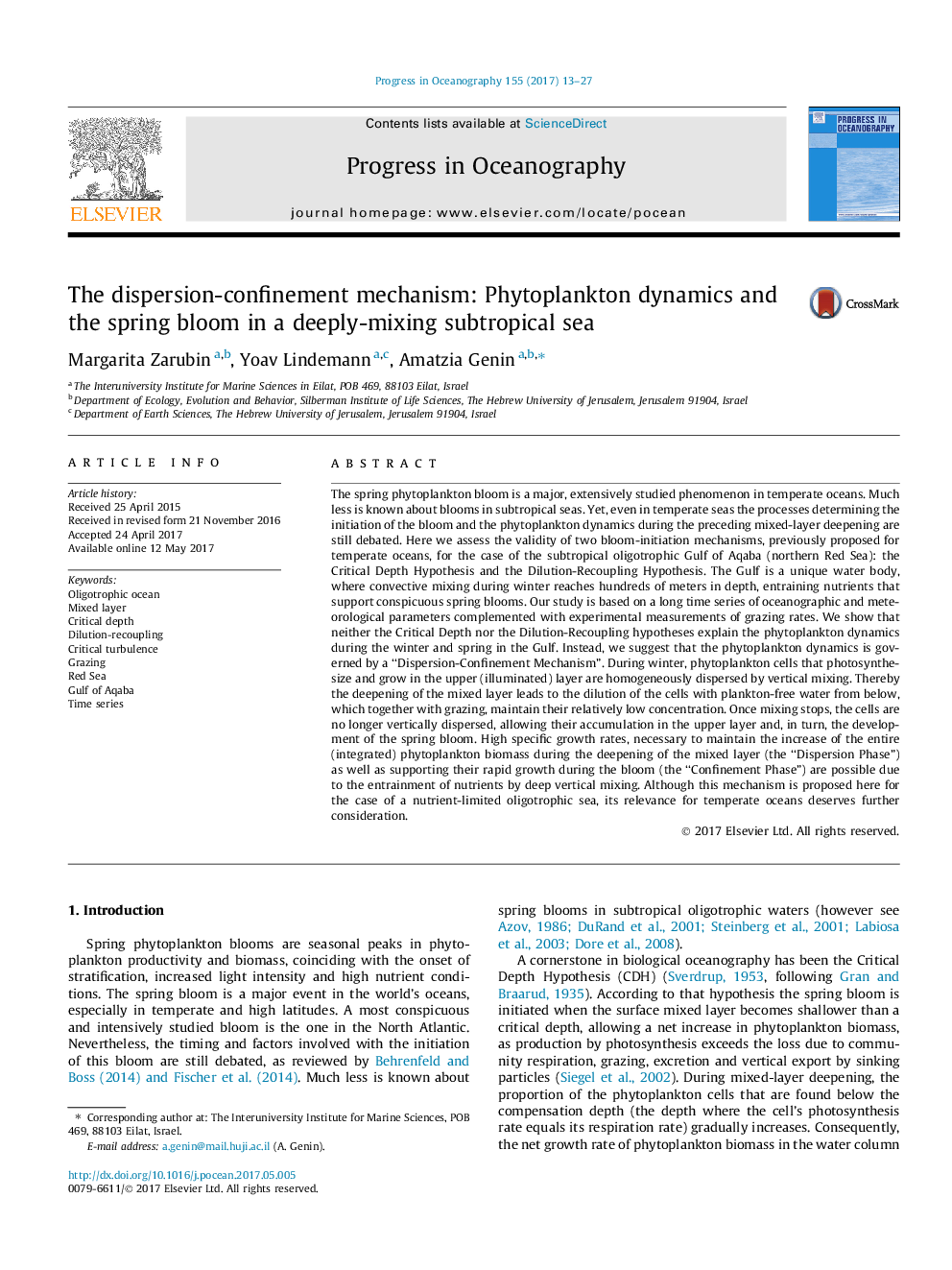| کد مقاله | کد نشریه | سال انتشار | مقاله انگلیسی | نسخه تمام متن |
|---|---|---|---|---|
| 5766535 | 1627903 | 2017 | 15 صفحه PDF | دانلود رایگان |
عنوان انگلیسی مقاله ISI
The dispersion-confinement mechanism: Phytoplankton dynamics and the spring bloom in a deeply-mixing subtropical sea
ترجمه فارسی عنوان
مکانیزم پراکندگی محرمانه: دینامیک فیتوپلانکتون و شکوفه بهاره در یک دریای ساتروپیک عمیقا مخلوط
دانلود مقاله + سفارش ترجمه
دانلود مقاله ISI انگلیسی
رایگان برای ایرانیان
کلمات کلیدی
اقیانوس اولیگوتروفیک، لایه مخلوط، عمق بحرانی، تفکیک پذیری، آشفتگی بحرانی، گاو نر. دریای سرخ، خلیج عقبه، سری زمانی،
موضوعات مرتبط
مهندسی و علوم پایه
علوم زمین و سیارات
زمین شناسی
چکیده انگلیسی
The spring phytoplankton bloom is a major, extensively studied phenomenon in temperate oceans. Much less is known about blooms in subtropical seas. Yet, even in temperate seas the processes determining the initiation of the bloom and the phytoplankton dynamics during the preceding mixed-layer deepening are still debated. Here we assess the validity of two bloom-initiation mechanisms, previously proposed for temperate oceans, for the case of the subtropical oligotrophic Gulf of Aqaba (northern Red Sea): the Critical Depth Hypothesis and the Dilution-Recoupling Hypothesis. The Gulf is a unique water body, where convective mixing during winter reaches hundreds of meters in depth, entraining nutrients that support conspicuous spring blooms. Our study is based on a long time series of oceanographic and meteorological parameters complemented with experimental measurements of grazing rates. We show that neither the Critical Depth nor the Dilution-Recoupling hypotheses explain the phytoplankton dynamics during the winter and spring in the Gulf. Instead, we suggest that the phytoplankton dynamics is governed by a “Dispersion-Confinement Mechanism”. During winter, phytoplankton cells that photosynthesize and grow in the upper (illuminated) layer are homogeneously dispersed by vertical mixing. Thereby the deepening of the mixed layer leads to the dilution of the cells with plankton-free water from below, which together with grazing, maintain their relatively low concentration. Once mixing stops, the cells are no longer vertically dispersed, allowing their accumulation in the upper layer and, in turn, the development of the spring bloom. High specific growth rates, necessary to maintain the increase of the entire (integrated) phytoplankton biomass during the deepening of the mixed layer (the “Dispersion Phase”) as well as supporting their rapid growth during the bloom (the “Confinement Phase”) are possible due to the entrainment of nutrients by deep vertical mixing. Although this mechanism is proposed here for the case of a nutrient-limited oligotrophic sea, its relevance for temperate oceans deserves further consideration.
ناشر
Database: Elsevier - ScienceDirect (ساینس دایرکت)
Journal: Progress in Oceanography - Volume 155, June 2017, Pages 13-27
Journal: Progress in Oceanography - Volume 155, June 2017, Pages 13-27
نویسندگان
Margarita Zarubin, Yoav Lindemann, Amatzia Genin,
